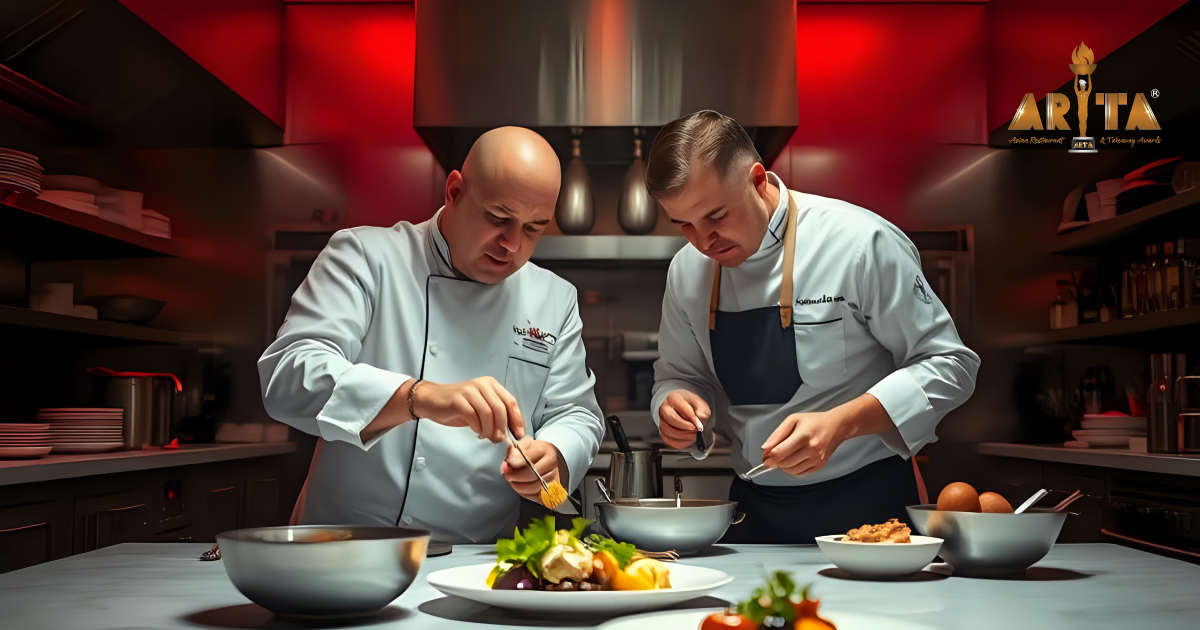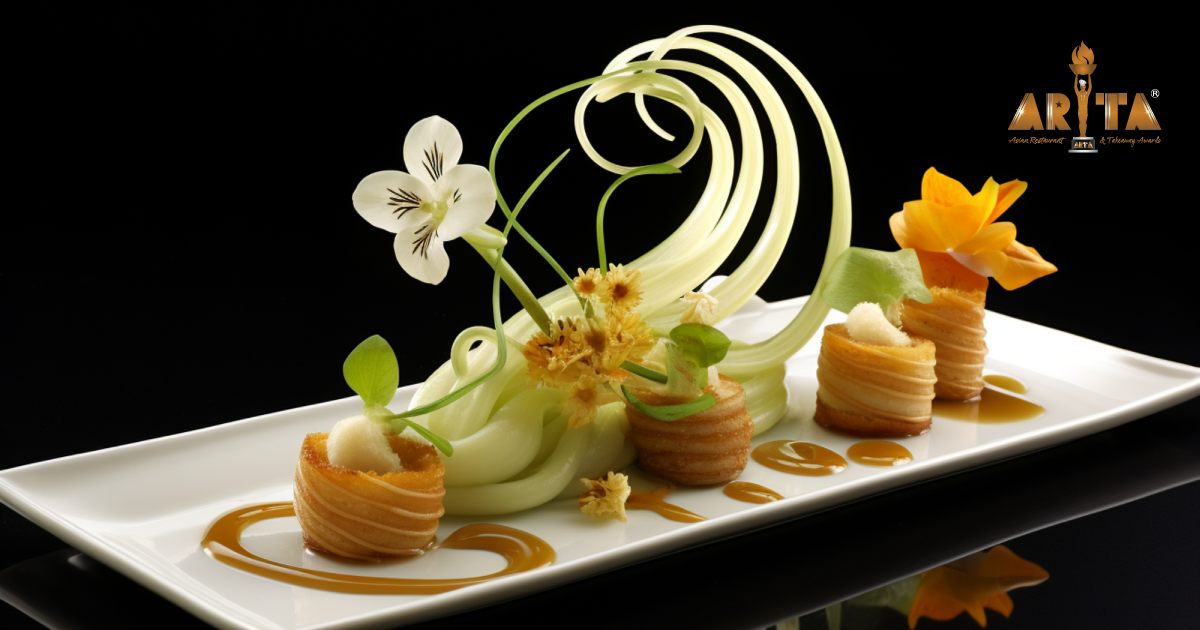In the modern culinary world, flavour pairing has become a piece of art. Today, top restaurant chefs desire to hone this skill. Rightly so, as the art of flavour pairing can make traditional dishes even better while opening new horizons of flavours, aroma, and texture.
To put your customers in awe you must understand the science behind flavour pairing. That’s what we’re going to share in this helpful blog.
Read on to learn more on flavour or food pairing, and how award-winning restaurants create memorable dishes with such a culinary genius.
Science of Flavour Pairing in Essence
Flavour pairing might seem random, but it’s not that easy. Scientifically, it’s knowing the ingredient compounds and how it would taste; not just for the sake of mixing one thing with another.
Note that experimenting with spices is ancient. Early cooks have prepared unconventional foods in their time to surprise the diners.
Today, modern chefs have honed the skill to expertly pair multiple ingredients into foods; hence, called flavour pairing. No surprise that restaurants with awards in mind hire chefs who are masters at it.
To be more specific, let’s get to the bottom of flavour pairing:
Knowing the Flavour Wheel or Chart
A chef must know his flavour wheel. It’s like a pilot with an air navigation chart to fly the aircraft like a pro. Basically, a flavour wheel consists of all the flavours classified into three basic categories:
- Primary; includes sweet, sour, salty, and bitter
- Secondary; umami, astringent, and fatty
- Tertiary; woody, spicy, fruity, floral, etc.
These three categories are further classified into relevant flavours and notes. As a pro chef, you must use this flavour wheel as a clear guideline while preparing remarkable dishes.
Mastering Twist and Balance
Mastering the art of twisting and balancing your ingredients is of the utmost importance. A twist like Sweet and Sour Chicken renders a warm, tangy, and delightful experience to the diners.
About the balance, there are some ingredients you can blend into a dish that would create a rather smooth taste instead of being overpowering. For instance, a hot sauce with creamy yoghurt will nicely complement each other on a salad.
Understanding Chemical Compounds in Ingredients
An expert chef, you must know and understand the chemical compounds of the ingredients that are responsible for various tastes and aroma. Mastering this knowledge will help you make the perfect flavour pairs.
For instance, vanillin can be derived from both vanilla and oak barrels, an essential compound in preserving wine for a more complex flavour with age.
Having such intricate knowledge on chemical compounds will help you experiment with dishes and beverages.
Methods Used by Award-Winning Restaurants to Create Memorable Dishes
When it comes to creating a memorable dish with flavour pairing, accomplished restaurants strive to take it to the next level.
They make sure that their customers love every pinch of smell and every bite of the dishes served. Furthermore, such creativity may also enable them to win prestigious restaurant awards.
Let’s find out how award-winning restaurants make it possible:
Seasoned Chefs Understand Flavour Perception
Restaurant awards go to seasoned chefs who understand the depth of flavour very well. They know that the sense of flavour transcends the basic taste with perfect aroma, texture, and temperature.
The aroma is something the customers experience through smelling while the texture of food is felt by the mouth. As for temperature, hot food can emanate stronger flavour compared to cold ones.
Flavour Pairing Is an Art for Expert Chefs
Competent chefs and restaurants know how to execute the art of flavour pairing. It’s because the flavour should sync into the depth, specifically, into the molecular level of the food.
For this, experienced chefs use an ideal flavour pyramid with three basic flavour levels: top level reflecting freshness, middle reflecting aroma, and base producing earthy flavour in food. A pro chef can expertly tackle these levels to turn any traditional dish from good to great!
Restaurant Owners Ensure Locally Sourced Ingredients
To make their flavour pairing work wonders, experienced restaurant owners make sure to purchase locally sourced ingredients. This ensures the freshness and authenticity of ingredients.
Moreover, topnotch restaurant businesses strive to maintain the seasonality in every ingredient they buy. Seasonal fruits and vegetables are mostly intact with the intensity of flavour, helping chefs with high quality flavour pairing.
Chefs Apply the Right Techniques
Apart from sourcing the authentic ingredients and mixing them, flavour pairing also involves the right techniques of cooking. Accomplished chefs are masters of cooking techniques who apply the methods, such as:
- Vacuum or Sous-Vide Technique: The famous French cooking technique, Sous-Vide means ‘under vacuum.’ It involves vacuum-sealing ingredients like lamb, liver, steak, etc., while boiling them in water under the right temperature. This method keeps the flavour intact.
- Maillard Reaction: Maillard reaction is basically putting ingredients in intense heat to produce wonder flavour in the dish. Roasting or searing ingredients create the Maillard Reaction in cooking.
- Fermentation: Chefs practice fermentation to create the microorganism effect in ingredients. This sometimes may alter or enhance the taste of food, making the flavour more complex and delightful.
Innovation Is the Way to Go
The top-ranking or award winning restaurants know very well that innovative approaches can keep them stand apart in the competition. Hence, they keep experimenting with newer dishes, ingredients, or styles.
One of the trendiest innovative approaches to flavour pairing is fusion cuisine. If flavour pairing is about combining unusual ingredients, fusion cuisine is all about changing the norm— adding new ingredients to a popular cultural dish and making it your own.
Purpose of Food or Flavour Pairing
To the foodies around the world, taste is diverse. To satisfy that appetite of millions of food lovers, restaurants come up with creative dishes every now and then. That’s one purpose of flavour pairing: to make customers happy!
There are other aspects of why food or flavour pairing is so significant in the culinary world, such as:
- To Bring New Customers: Preparing innovative dishes can attract new customers. When you surprise a new batch of foodies with flavour fusions, you hit the success button for your restaurant business.
- To Showcase Culinary Genius: While thoughtfully preparing creative dishes with selected spices and ingredients, you’re displaying your skill level. This puts you ahead of the competition in the culinary industry.
- To Get Positive Customer Reviews: Your innovative flavour pairing skills can get positive reviews on food review sites from both customers and industry experts— making it highly likely to win food industry awards.
Final Thoughts
Mastering the science of flavour pairing is essential for creating memorable dishes in award-winning restaurants. By understanding the flavour wheel, balancing ingredients, and knowing the chemical compounds in foods, chefs can elevate traditional dishes and explore new culinary horizons.
Combining locally sourced ingredients with innovative cooking techniques ensures freshness and authenticity, while continual innovation in flavour combinations keeps restaurants ahead in the competitive culinary industry, delighting customers and garnering acclaim.





